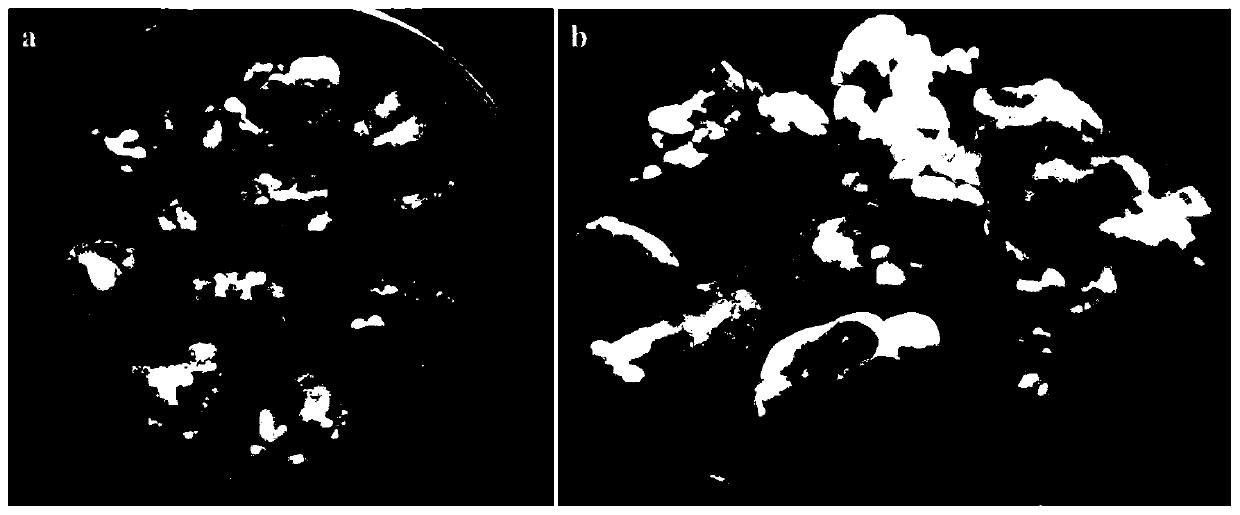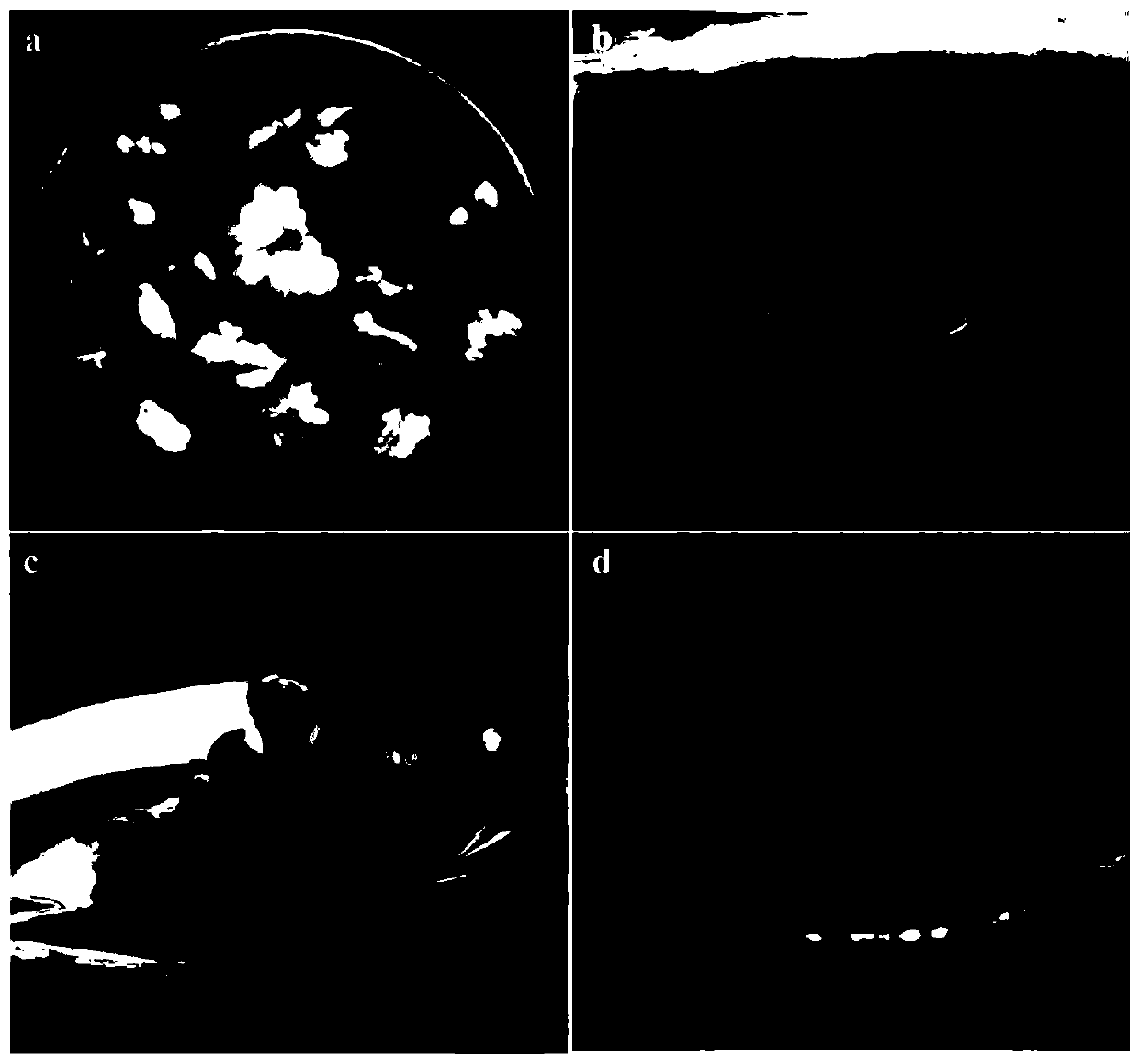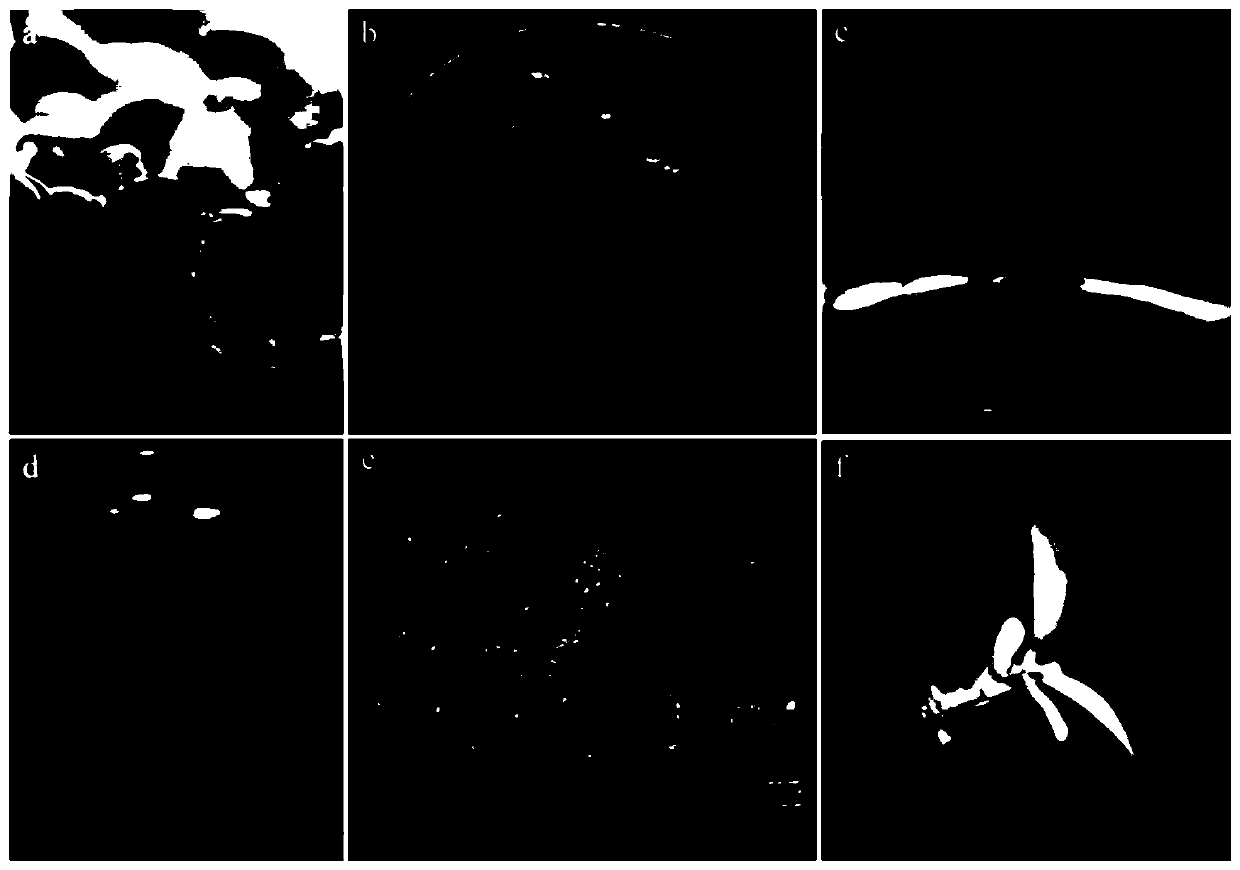Seedling tissue culture method of Camellia chekiangoleosa Hu immature embryo
A technology for safflower camellia and immature embryos, which is applied in the field of plant bioengineering, can solve the problems of low natural reproduction rate, unfavorable mining and protection of safflower camellia resources, low induction rate and differentiation rate, etc., achieves reasonable hormone matching and improves rooting. rate and transplanting survival rate, and the effect of shortening the seedling cycle
- Summary
- Abstract
- Description
- Claims
- Application Information
AI Technical Summary
Problems solved by technology
Method used
Image
Examples
Embodiment 1
[0036] The present embodiment provides a method for group seedling cultivation of immature embryos of safflower camellia oleifera, the steps are as follows:
[0037] 1) Explant selection and disinfection
[0038] From June to July, the fruits of Zhejiang safflower camellia oleifera 120-150 days after flowering were collected and brought back to the laboratory, and the young embryos were split open with a kitchen knife. Then select the seed coat color as white or white with rust red, soft or slightly hard immature embryos and put them into a beaker with sterilized water.
[0039] In the ultra-clean workbench, the immature embryos were sterilized with 75% (v / v) ethanol for 30 s, then washed 3 times with sterile water, then sterilized with 0.1% (m / m) HgCl2 surface for 8 min, and then rinsed with sterile water Wash 6-8 times.
[0040] 2) Callus induction
[0041] Use sterilized tweezers and a scalpel to peel off the seed coat of the immature embryo, cut the cotyledon into small...
Embodiment 2
[0054] This embodiment provides a method for group seedling cultivation of safflower camellia immature embryos. The steps and conditions are the same as in Example 1, except that the culture medium used is different. The culture medium used in this embodiment is specifically referred to as follows:
[0055] Callus induction medium includes MS medium, 0.2mg / L NAA, 1.5mg / L KT, 2.0mg / L TDZ, 70g / L sucrose, 8g / L agar, 500mg / L hydrolyzed casein , 500mg / L hydrolyzed milk protein, 100mg / L proline, 100mg / L glycine, 100mg / L glutamine, 10mg / L silver nitrate, 100mL / L coconut water, pH 5.6-5.8 .
[0056] Proliferation and differentiation medium include MS medium with macroelements reduced to 1 / 2, 0.05mg / L IBA, 2.0mg / L 6-BA, 0.005mg / LTDZ, 30g / L sucrose, 7g / L agar, 500mg / L hydrolyzed casein, 500mg / L hydrolyzed milk protein, 200mg / L proline, 200mg / L glycine, 200mg / L glutamine, 10.0mg / L silver nitrate, 100mL / L coconut water , pH is 5.8.
[0057] The rooting medium of cotyledon type somatic ...
Embodiment 3
[0059] This embodiment provides a method for group-cultivating seedlings of young embryos of safflower camellia oleifera, the steps of which are the same as in Example 1, except that the conditions of individual steps are different, and the culture medium used is different. The method used in this embodiment The different conditions and culture medium are specifically referred to as follows, and the experimental steps and conditions that are not clearly stated can be found in Example 1:
[0060] 1) Explant selection and disinfection
[0061] In the ultra-clean workbench, the immature embryos were sterilized with 75% (v / v) ethanol for 45 s, then washed 4 times with sterile water, then sterilized with 0.1% (m / m) HgCl2 surface for 10 min, and then rinsed with sterile water Wash 8 times.
[0062] 2) Callus induction
[0063] Callus induction medium includes MS medium, 0.2mg / L NAA, 0.8mg / L KT, 1.2mg / L TDZ, 50g / L sucrose, 8g / L agar, 500mg / L hydrolyzed casein , 500mg / L hydrolyzed ...
PUM
 Login to View More
Login to View More Abstract
Description
Claims
Application Information
 Login to View More
Login to View More - R&D
- Intellectual Property
- Life Sciences
- Materials
- Tech Scout
- Unparalleled Data Quality
- Higher Quality Content
- 60% Fewer Hallucinations
Browse by: Latest US Patents, China's latest patents, Technical Efficacy Thesaurus, Application Domain, Technology Topic, Popular Technical Reports.
© 2025 PatSnap. All rights reserved.Legal|Privacy policy|Modern Slavery Act Transparency Statement|Sitemap|About US| Contact US: help@patsnap.com



